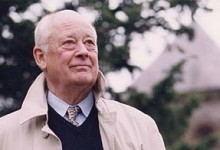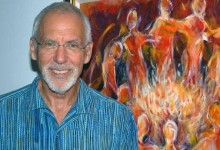Recently I read a very inspiring article on Neighbors As Citizens Making Democracy Work.
It is the transcript of a conversation with John McKnight, Peter Block and David Mathews. On their website Abundant Community, Block and McKnight regularly publish their research, thoughts and findings as they take a deep-dive into what makes a community tick.
It’s quite a long transcript, but worth reading till the end. Here are the parts of the article that I found most inspiring for my own work on Social Architecture:
First, the insight that in order to engage into a group or a community one has to become a producer of something. It is triggered by the question “If I empower, which one of us really has the power?”. This is a statement that aligns closely with what I have previously experienced and described as “Who is carrying whom?”
“It seems to us the only way you have power is to be able to make something, to do something, to produce something. You can’t think of a powerful person in history that didn’t make or do something. So the question we worked on in our research is how people come to have power.”
In 1996 Charles Handy talked about the paradox of productivity. His main point was that that by pricing our work, we can ultimately destroy it because we start to believe that the monetary value is the only source of truth. As a result we orient our investments of time and attention to those things that bring the most extrinsic value. People stop doing things because of the rewarding and challenging nature of the work itself. This is what ultimately numbs us into helplessness.
“You think people are probably alienated because they feel they’ve stopped being producers of something?”
“As we followed this thought that power comes from the work used in producing things, then we began to ask ourselves how this work is done. It turns out that work is done pretty much the same way whatever the work is, and wherever it’s done.”
Second, as a consequence of the producer idea, we can look differently at how people make a difference. It starts with the experience of the way we convene and our awareness about that reason.
“There’s a story in one of the reports we have just gotten about a community and the schoolhouse was peeling and the paint was falling off. It looked terrible. And so a group of people––you know, the school board didn’t have any money and couldn’t get to it––the folks in the neighborhood got together and got their paint scrapers and their brushes and got a little paint and they repainted the school. Some said, “Well, this is nice, but that’s really not going to save the community.” Folks said, “You don’t understand. The purpose of the project was not to get paint on the walls of the building. The purpose of the project was to demonstrate that when we got together we could make a difference.”
Third, the view on citizenship and advocacy that results from this line of thought is inspiring:
“The notion of citizens as agents more than clients. The notion of citizens who make things and gain power by making things, that’s not prime time.
That’s why we emphasize it so much in our work. And John is reporting, some of his research, when you begin to talk to people as though they were teachers and not just consumers of education, it resonates with them, they like it. They pick up their shoulders.”
Fourth, the perception of citizens as agents shapes a different way of looking at the potential of a community. It challenges us to look at community as the educational institution.
“The community itself is an educational institution and people not recognizing that don’t tap into the educational resources of the community, which begin in families and extend on to all kinds of entities. So they go to the institutions hat-in-hand and they are successful sometimes and not successful others. But in any case, the educational forces in the community go untapped.”
“And who would’ve thought that just folks who were running the stables were teachers? They are and can be. So that, it seems to me, is what we’re missing. The community is the educational institution, the school is there to support it. We’ve got it completely turned around.”
This line of thought is also valuable in other domains of our society. Healthcare is a foremost example.
“But school has an monopoly on education, right? And the medical system has a monopoly on health…”
“Health is more than medicine. There are things that physicians can do and things that they can’t do. (…) If people don’t utilize their own capacities to stay well, do some early check-ups, do some preventative … then all of these advanced medicines and technologies aren’t going to help us. So there’s been a small but, to my mind, very important turn toward what I call the behavioral indications of health.”
Fifth, this brings us to the ‘gifts conversation’, i.e.: the point where we ask people to become agents. It all starts with becoming aware of what they can offer the community. It takes some courage to ask what gifts people have to offer when every single indicator around you is prompting you to rescue, teach, tell and sell.
“And one of the things that everybody who does this comes back with, and in great surprise, is that no matter what level of income the neighborhood is, what you can see is that most people, if you ask them questions like, “What gifts do you have? What skills do you have? What do you care about the most? What would you be willing to teach?” will give you three or four answers to each of those on average.”
Finally, we get to the core of the transformation that community is capable of doing:
“When people are dealt with in terms of their indigenous capacities, it’s transforming.”
Further in the transcript we can read how this conversation allows them to sharpen the definition of a citizen, i.e.: an individual with collective possibilities.
So grateful that I found this interview because in my research for the “why” of Social Architecture, this allows me to take leaps.



